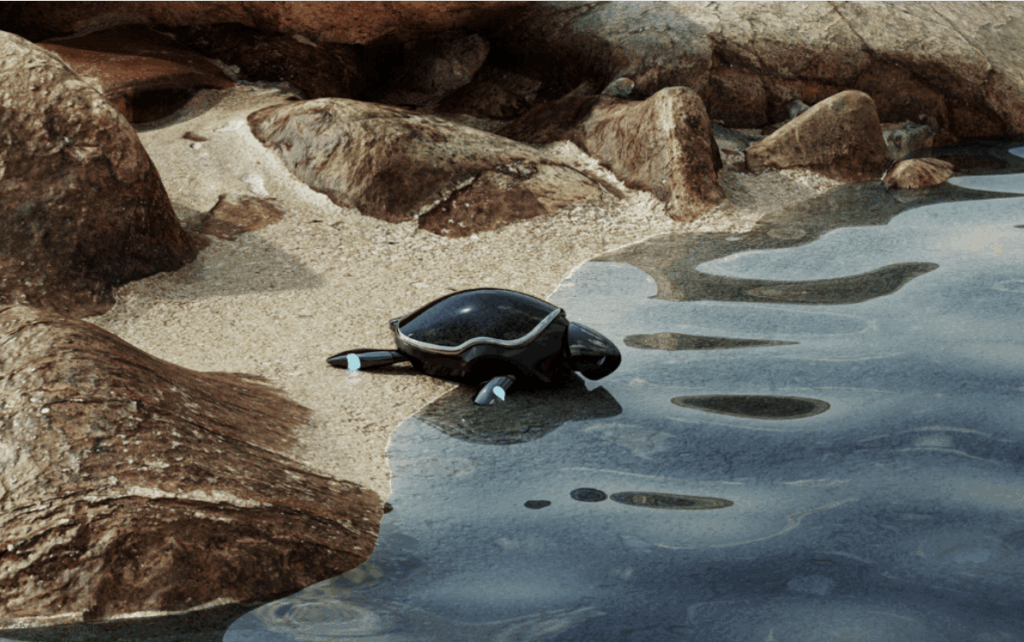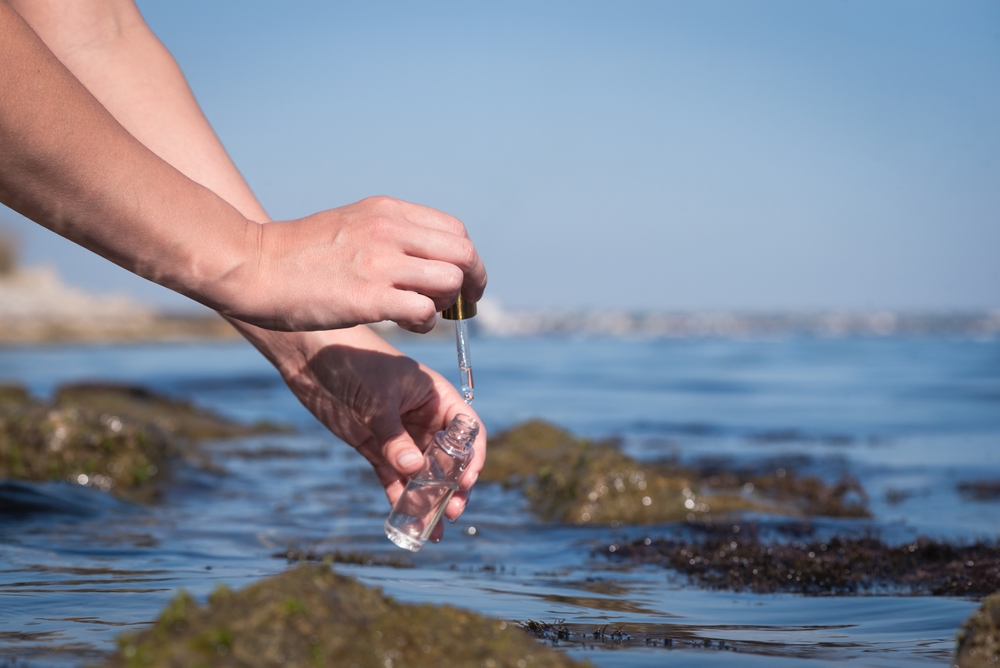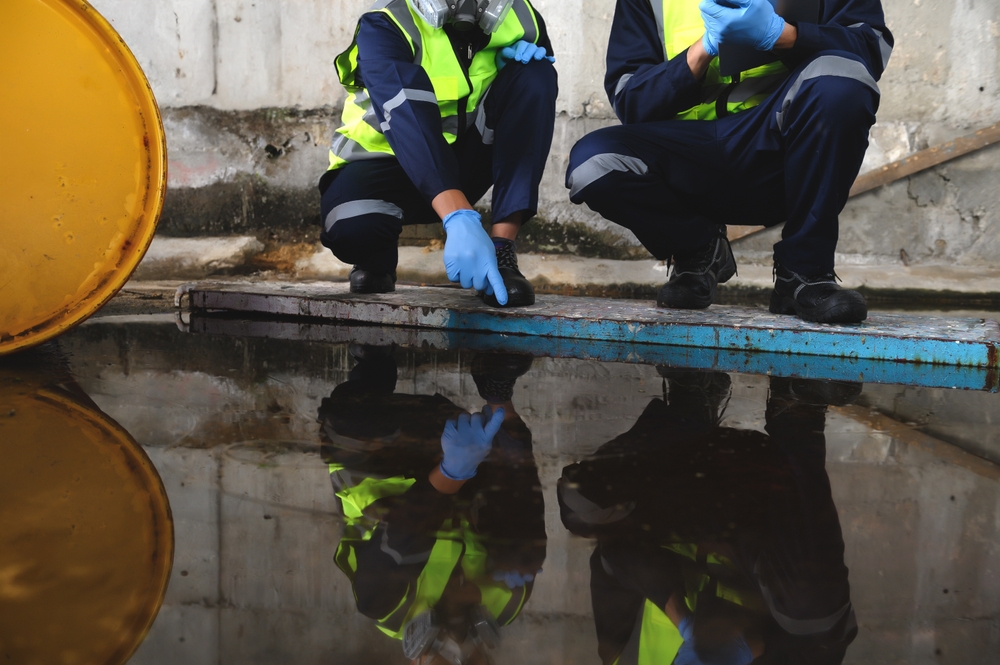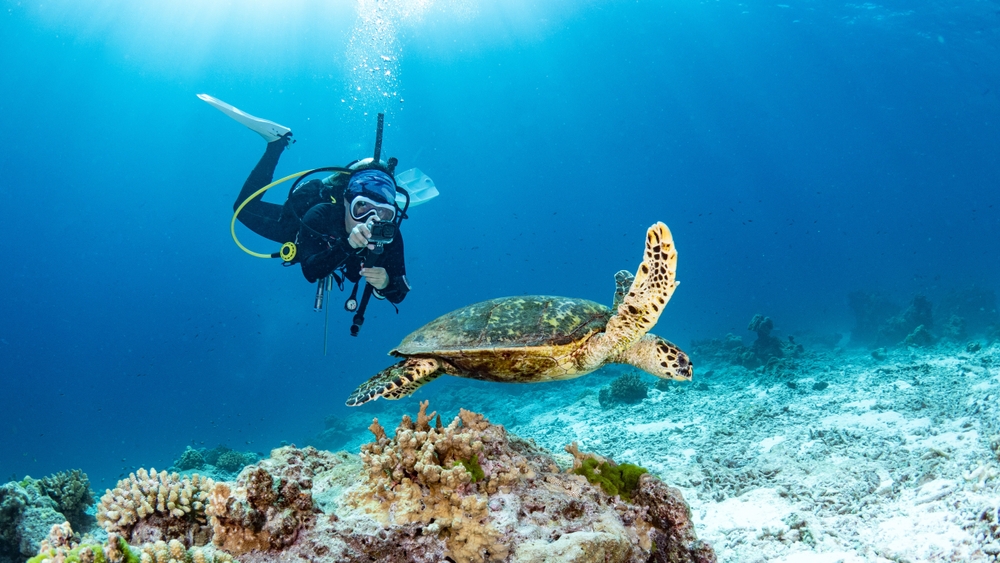Despite covering about 70% of Earth’s surface, the ocean has gone mostly unexplored. As of June 2024, only 26.1% of the world’s seafloor has been mapped, according to the NOAA. That leaves so much to be explored, from undiscovered species to unique geological formations and many more phenomena. However, researchers have created a new way to explore beneath the surface using a turtle robot that can organically integrate into various ecosystems with minimal disruption.
The New Robot Turtle Research Tool

Beatbot Amphibious RoboTurtle
The Amphibious RoboTurtle was designed by Beatbot, a company known for innovative robotic pool cleaners. This futuristic-looking robot turtle is intended for ecological research, exploration, and responses to natural disasters. It can navigate through water and land while monitoring the environment, tracking biometrics, and sampling hazardous materials. Usually, researchers require a wide variety of techniques and technologies to examine aquatic ecosystems, check water quality, and track members of endangered species, but now Beatbot presents one robot to manage all three.
The Amphibious RoboTurtle is an example of biomimicry, which is when man-made creations are modeled after biological beings and processes. This design is key since it can allow the technology to infiltrate different habitats without causing as many disturbances as other research tools. All the while, the system is clearly inspired by the company’s more well-known products. In fact, Beatbot presented the RoboTurtle at CES 2025; at the same time, they revealed their latest pool cleaner bot, the AI-powered AquaSense 2.
Read More: Deep Sea Expedition Leads to Discovery of 20 New Species Living in Underwater Mountain
To Conserve and Protect

According to Beatbot, the robot turtle was designed with a buoyancy system to travel from sea to land, as well as through rough terrain and deep water. Its bionic multi-jointed limbs make its movements more precise to avoid disrupting the wildlife around it. The company hopes this technology will help protect oceanic environments in a number of ways, such as alerting authorities of disasters like oil spills and warning when endangered species enter dangerous situations. Meanwhile, it may reduce expenses for government agencies and researchers while streamlining their data collection, according to Interesting Engineering in collaboration with the company.
“The Robotic Turtle embodies our vision of leveraging Beatbot’s leading technology to address critical ecological challenges on a global scale,” said York Guo, CMO of Beatbot, in a press statement. “It is a partner to help safeguard communities and preserve the safest water levels for all creatures. This unique robot serves the planet for good alongside conservationists, scientists, and emergency responders.”
Why We Track Oil Spills

Oil spill detection is vital for protecting our oceans. Spills can lead to the death and injury of local wildlife, soil degradation on shorelines, and many more troubling environmental consequences for animals and humans. As of now, there is no solution to definitively prevent oil spills. So researchers are focused on mitigating the effects when they do occur. So, early detection is key.
As of now, scientists employ two main methods, according to a 2024 study. One uses maritime vehicles, oil sensor buoys to directly survey the waters. The second involves remote sensing techniques through satellites, aerial, and radar imagery. However, both methods come with challenges and limitations, such as difficulties with visibility and confusion between different types of oils. Therefore, many scientists are experimenting with more effective solutions.
Why We Track Endangered Species

Scientists use animal tracking to learn about their behaviors and biology. But tracking can do more than observe; it allows researchers to protect creatures and their habitats. These tiny GPS devices are tricky when it comes to land animals, and even more so for their marine counterparts, especially the ones who regularly swim thousands of miles far beneath the surface.
For example, scientists from the Smithsonian have followed cownose rays and discovered their complete migration path along the East Coast. This can lead to regulations to defend this species from overfishing. Similar studies in the past have already led to productive changes. For instance, many contributed to the Endangered Species Act, which provides protection and resources to recover species at risk of extinction. Fortunately, the Act removed the Steller sea lion and gray whale from the list. Their populations have recovered and are continuing to increase, reports the NOAA. However, there are still many endangered and elusive species that need protection, from the vaquita, hawksbill turtle, and whale shark, according to the World Wildlife Organization. And for that to become possible, more advanced tracking technology is needed. Perhaps even a robot turtle.
Read More: Mysterious and Uncharted Structures Discovered Beneath the Pacific Ocean

